How to Move Plants
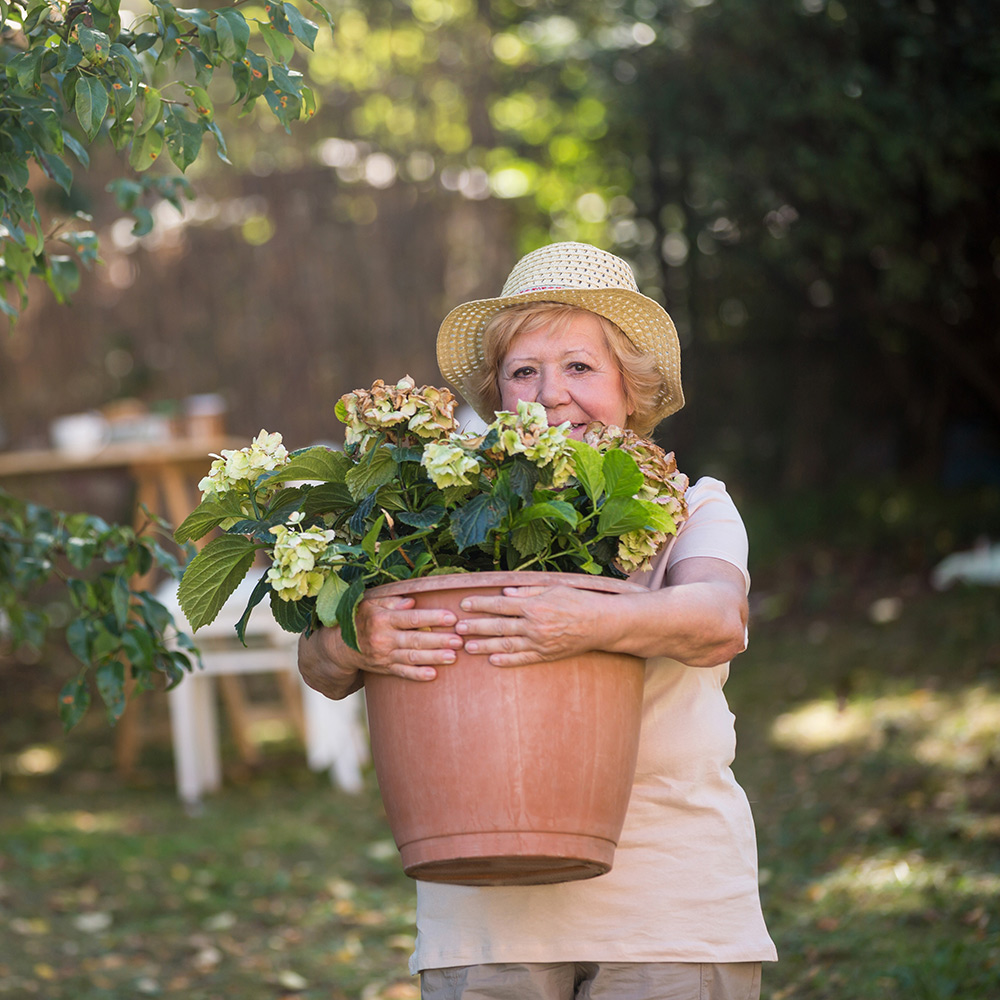
Last updated September 7, 2023
Moving your plants to a new home can be tricky. Like pets, plants can get stressed when their environment changes. This can cause them to struggle and sometimes not survive. With proper preparation and a little planning, you can move your plants yourself with minimal damage or wilting. Read on for tips on how to move plants so they thrive after the move. Plus, find out how to take care of them once you’re in your new home.
Difficulty:
Beginner
Duration:
Under 2 hours
Table of Contents
Preparing Plants for Moving
Moving Heavy Planters
Transplanting Trees & Bushes
Moving Day
After the Move
Preparing Plants for Moving

Plants need time to prepare for moving. It’s best to gradually make changes and get them conditioned.
If possible, start about a month before you plan on moving. Strengthen plants by keeping them properly watered and fed. If they are in ceramic or other breakable containers, repot them. For easier transporting, choose clean, lightweight recyclable or plastic planters of the same size.
No less than a couple of weeks from your move, examine your plants carefully. Prune any weak or damaged leaves. Pinch back new growth. This will help conserve your plant’s energy. If you find pests, treat them using the appropriate insecticide to insure they don’t travel with you. Water plants 3 to 5 days before moving so they aren’t too wet or dry when you leave. If your moving day is hot or during the summer, water 2 days before you move.
Tip: Moving companies are prohibited from moving plants across state lines. Plan accordingly.
Moving Heavy Planters
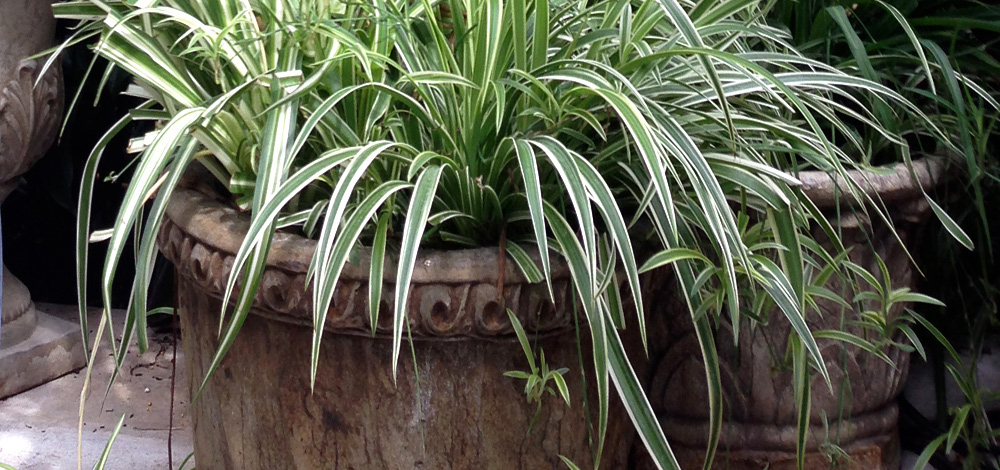
Floor or oversize planters made of ceramic or other stone can be heavy even when empty. When you add the plants, roots, moist soil and any drainage rocks, a planter can weigh as much as 150 pounds. Moving a full planter can be a real chore. An individual planter caddy can help. Or think about getting a dolly or hand truck that lets you lift and roll the planter to your moving truck or car. Depending on the size and weight of your planters, you may need help placing them on the caddy.
Tip: Consider repotting heavy plants. Fill the bottom of the planter with shredded styrofoam packing material. This will make the planter lighter and easier to move.
Transplanting Trees & Bushes
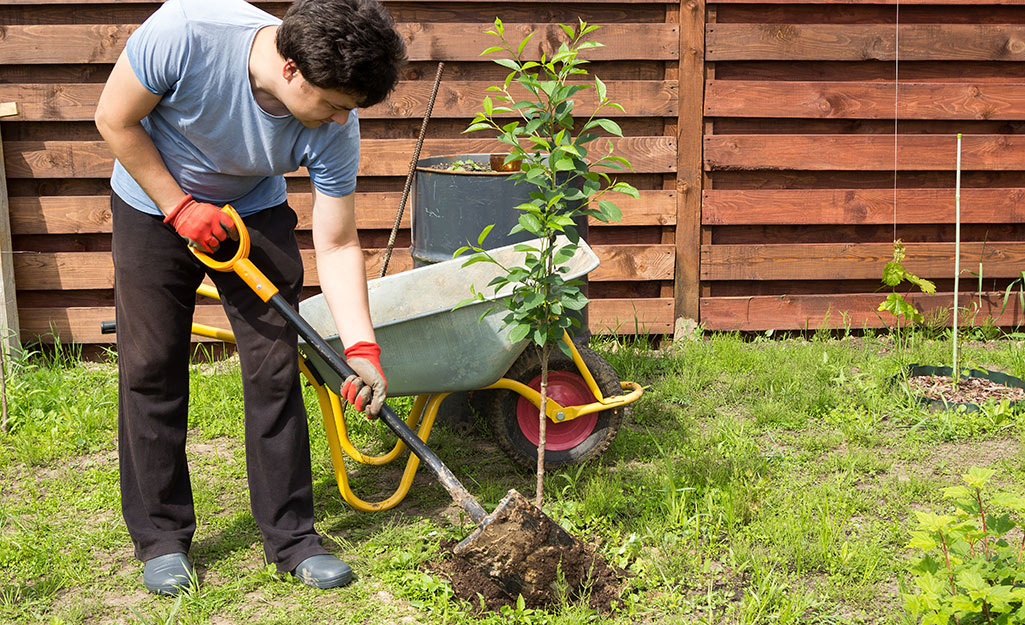
Some bushes or small trees in your yard can be moved successfully. The best times for digging up trees and bushes is after their leaves fall and before they bud in the spring. Other times of the year the plant is more likely not to survive. Preparation is everything for a moving small trees and bushes successfully. You’ll need a spade or shovel and a container or tarp.
- If possible, identify and prepare a new place in advance for planting at your new home. Dig a hole that is at least twice the size the root ball, but about the same depth.
- Water the plant thoroughly, 2 to 3 days before digging it up. Make sure the water reaches deeply into the roots.
- Prune any dead or damaged leaves and branches.
- Dig up the plant and its root ball a day before transporting. Keep the root ball as intact as you can. It can be as far as 10 inches from the trunk. Start by carefully making a 3-inch circle and moving out further if you hit the root.
- Place the tree or bush in a new container or wrap it securely in a tarp so the root ball doesn’t dry out.
Moving Day
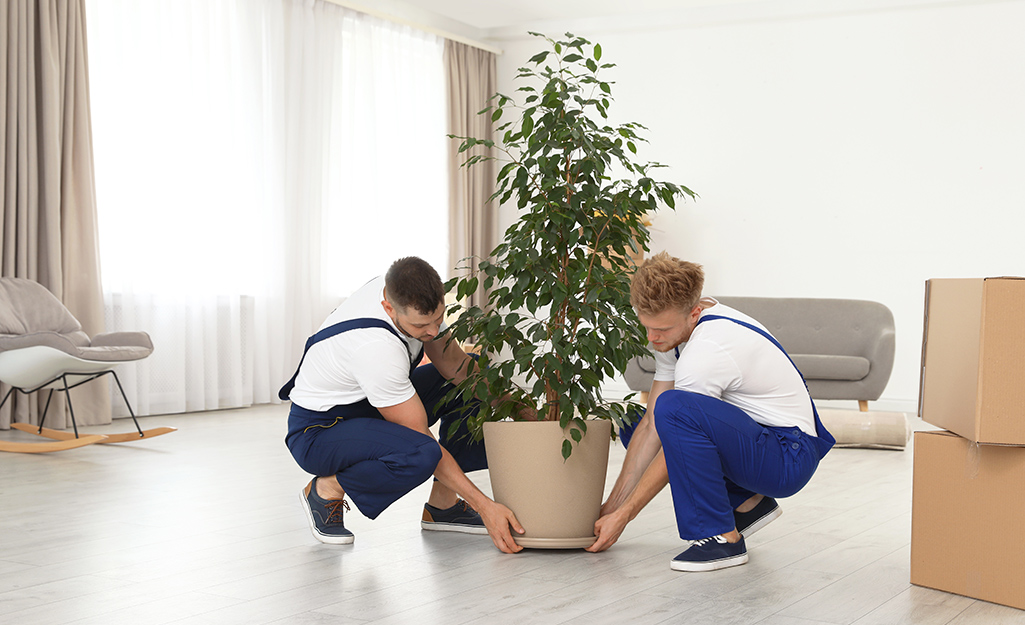
The night before moving day:
- Make sure plants are well-hydrated and the soil is moist.
- Gently and loosely wrap large plants with an old cloth or packing paper. This will protect its leaves and stems.
- Pack small plants together in moving boxes taller than they are. Ball up packing paper and place it between the containers to keep them snug.
- Think about moving your plants yourself so you can give them the gentlest transport. Avoid exposing unwrapped plants to wind or extreme cold.
- If you’re using movers, label each box or individual plant. Ask movers to place any plants in the truck last so they are unloaded first. Ask movers to secure the plants so they don’t tip over or get crushed.
- If you’re shipping your plants, remove the plants from their pots. Wrap the roots in wet paper towels covered with plastic wrap. Layer plants into a sturdy box and add extra paper so they don’t move around. Punch a few holes in the box and label it so the shippers will know it contains live plants.
After the Move
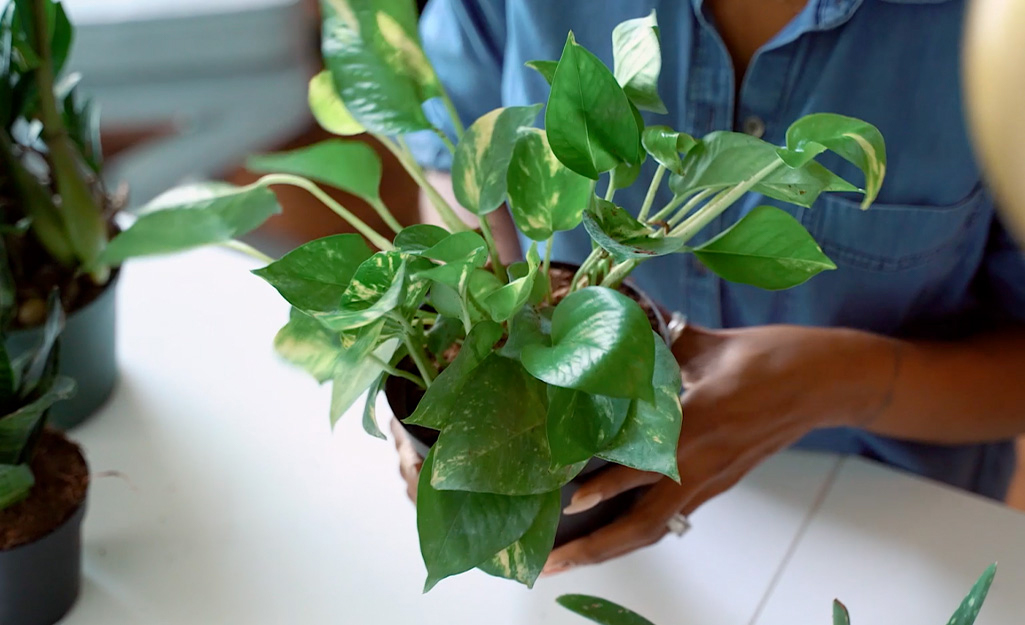
Plants will need time to recover from the stress of the move. They may lose leaves or look wilted. Here’s how to mitigate the effects of shock after the move.
- After arriving, get plants settled first. Remove any wrap or covers gently.
- Check plants and gently remove any broken leaves or stems.
- Place plants where they won’t be disturbed. Once you put your plants in a room or area, don’t move them around. They need to acclimate to their new environment.
- Check to see if plants need water. If so, water accordingly.
- Make sure not to put plants in direct sunlight right away. Gradually move them into direct sunlight as they get used to their environment.
- Keep plants well-watered. Be consistent with a watering schedule.
Now that you know how to move plants, your greenery should do well in your next move. Start giving your plants extra care and preparation about a month before the move. Prune dead stems and apply any insecticide or fungicide if necessary. Unpack plants first when you arrive and give them extra time to recover. When you’re ready to move your plants, get potting soil or any other supplies you need. Use The Home Depot Mobile App to locate products and check inventory. We'll take you to the exact aisle and bay.


























